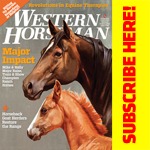With its roots tracing to a Spanish land grant, the O RO Ranch has been called the last of the great northern Arizona ranches.

The fall works on the O RO Ranch, north of Prescott, Arizona, were just getting off to a good start when the first big rain hit. To hear “Spider” Daily tell it, it was one miserable night at the roundup wagon.
Today, though, it’s a crisp, sunny day in early October. Spider leans against a fencepost at the branding pens ranch hands call “Number 2,” drinking a Coke and taking a break from the morning’s branding. At 6-foot-4 – plus the two-inch heels on his lime green, stovepipe boots – it’s easy to see where he got his nickname. With his shy grin and handlebar mustache, he looks like a throwback to an earlier era.
“We were camped at West Split when the rain started about 11 that night,” Spider recalls, “but it was 3 in the morning when it hit big. Everybody had water in their tepees. In fact, it practically washed us away.”
There was no rain gauge at West Split, but ranches all around the area recorded anywhere from four to nine inches that night, surely some kind of record for northern Arizona. The cowboys at the wagon abandoned their bedrolls and tepees, and spent the remainder of the night huddled under the wagon fly.
Life is different on this ranch. It’s still strictly a horseback outfit, and one of the few ranches left that runs a wagon, spring and fall – out of necessity, not for show. A hand here had better be able to live in a tepee six months out of the year, shoe his own horses, mount a snorty horse at daylight, and spend a hard day in the saddle, come rain or shine.
The 257,000-acre ranch is still run much as it’s been for more than a century. One of the largest, roughest, most remote ranches in the state, for the most part, it’s shut off from the rest of the world by a locked gate. This only adds to the intangible mystique surrounding the ranch. Anyone who’s ever lived or worked here feels it.
Life on “the big outfit,” as former manager Bob Sharp called it in his 1974 book by the same name, might be more modernized today, but the people who live and work here are still a special breed, “more independent, carefree, proud and loyal,” as he put it.
For the complete story, see the February 2006 issue of Western Horseman.



